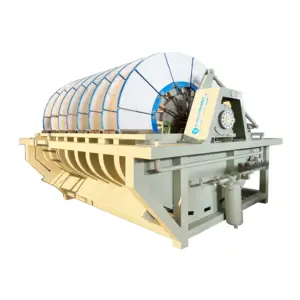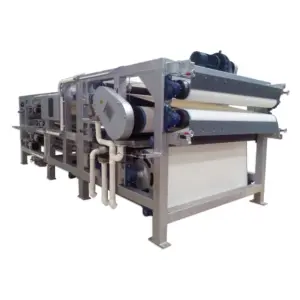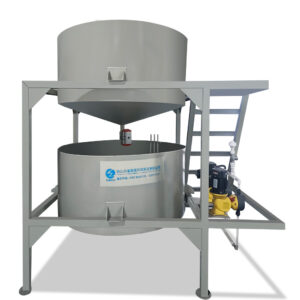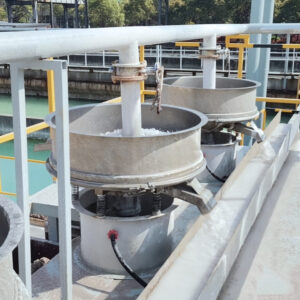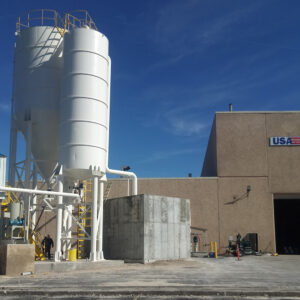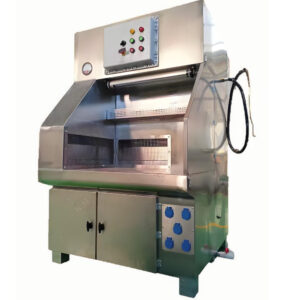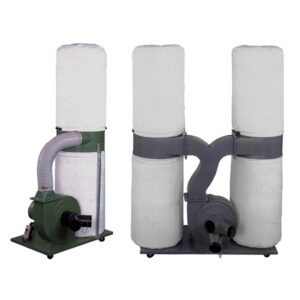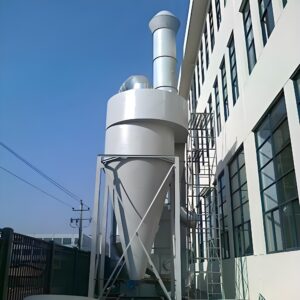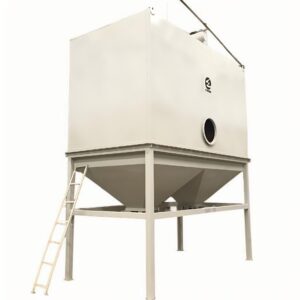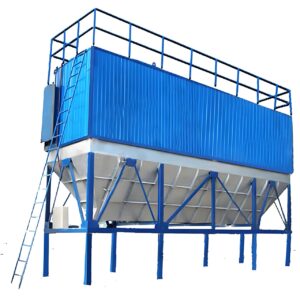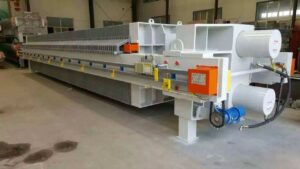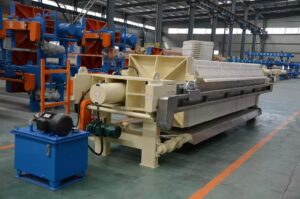전 세계의 산업 시설에서는 매일 수십억 갤런의 오염된 물이 발생하여 환경 시스템과 규제 준수에 대한 압박이 가중되고 있습니다. 이러한 폐수를 적절히 처리하지 않으면 지역 생태계가 파괴되고 지하수 공급원이 오염되며 기업은 수백만 달러에 달하는 막대한 벌금에 노출될 수 있습니다. 처리되지 않은 산업 폐수는 기업의 평판과 운영 라이선스를 영구적으로 손상시킬 수 있기 때문에 그 결과는 금전적인 처벌을 넘어선다.
해결책은 포괄적인 폐수 여과 산업용으로 특별히 설계된 시스템입니다. 이 문서에서는 시설에서 환경 규정 준수와 운영 효율성을 모두 달성하는 데 도움이 되는 최첨단 처리 기술, 선택 기준 및 실제 구현 전략을 살펴봅니다. 최신 여과 장비가 어떻게 폐기물 관리 문제를 경쟁 우위로 전환할 수 있는지 알아보세요.
폐수 여과란 무엇이며 왜 중요한가요?
폐수 여과는 물리적, 화학적, 생물학적 공정을 통해 산업 용수 흐름에서 오염 물질을 체계적으로 제거하는 것을 의미합니다. 도시 수처리와 달리 산업용 애플리케이션은 중금속, 유기 화합물, 부유 물질, 제조 공정에 특정한 화학 잔류물 등 복잡한 오염 프로필을 해결해야 합니다.
효과적인 산업 폐수 처리 오늘날의 규제 환경에서는 그 중요성을 아무리 강조해도 지나치지 않습니다. EPA의 폐수 배출 지침은 구체적인 배출 기준을 요구하며, 최근 단속 데이터에 따르면 위반 시 하루 평균 $37,500의 벌금이 부과됩니다. 적절한 여과 시스템은 규제 요건 외에도 물 재사용 기회, 지자체 처리 비용 절감, 프로세스 효율성 향상 등 상당한 운영상의 이점을 제공합니다.
최신 여과 기술은 크게 발전하여 많은 오염물질에 대해 99% 이상의 제거 효율을 달성하고 있습니다. 예를 들어, 고급 멤브레인 시스템은 총 용존 고형물을 1,000 mg/L에서 10 mg/L 미만으로 줄여 가장 엄격한 배출 요건도 충족할 수 있습니다. 포르부 클린 테크 는 다양한 산업 애플리케이션을 위한 고성능 솔루션을 전문적으로 개발합니다.
| 오염 물질 유형 | 일반적인 농도 | 필요한 제거 효율 | 선호하는 기술 |
|---|---|---|---|
| 부유 고형물 | 500-2,000 mg/L | 95-99% | 멤브레인/모래 여과 |
| 중금속 | 1-50 mg/L | 99%+ | 화학적 침전 + 여과 |
| 오일 및 그리스 | 10-500 mg/L | 90-95% | 용존 공기 부양 + 여과 |
산업 폐수 처리 시스템은 어떻게 작동할까요?
산업 폐수 처리 시스템은 다양한 오염 메커니즘을 처리하는 통합 프로세스를 통해 운영됩니다. 이러한 프로세스를 이해하는 것은 적절한 기술을 선택하고 시스템 성능을 최적화하는 데 매우 중요합니다.
물리적 여과 프로세스
물리적 여과는 대부분의 처리 시스템의 기초를 형성하며, 크기 배제, 중력 침강 및 표면 인력을 통해 부유 입자를 제거합니다. 가장 일반적인 접근 방식인 모래 여과는 분당 100~10,000갤런의 유량을 처리하면서 10마이크론보다 큰 입자를 85-95% 제거할 수 있습니다.
멤브레인 여과 기술은 중요한 애플리케이션에 탁월한 성능을 제공합니다. 0.01~0.1미크론 기공 크기의 한외 여과 멤브레인은 99.9% 효율로 박테리아, 바이러스 및 콜로이드 입자를 제거합니다. 역삼투압 시스템은 제거 기능을 더욱 강화하여 용존 염분과 유기 분자를 0.001미크론까지 제거합니다.
화학 처리 방법
화학적 처리는 물리적 공정으로는 포집할 수 없는 용존 오염물질을 처리합니다. 응고 및 응집 공정은 황산알루미늄 또는 염화철을 사용하여 미세 입자를 응집시켜 다운스트림 여과 효율을 40-60%까지 개선합니다. 투여율은 일반적으로 수질 화학 및 오염 수준에 따라 50~200mg/L입니다.
고급 산화 공정(AOP)은 화학 처리의 최첨단을 대표하며, 기존 처리에 저항하는 잔류성 유기 오염 물질을 파괴할 수 있습니다. UV/과산화수소 시스템은 15~30분 접촉 시간 내에 제약 화합물, 살충제 및 산업용 용매를 90~99% 제거합니다.
생물학적 처리 시스템
생물학적 처리는 미생물을 활용하여 유기 오염 물질을 분해하는 방식으로, 유기물 부하가 일정한 시설에 비용 효율적인 솔루션을 제공합니다. 활성 슬러지 시스템은 유기물을 소비하는 미생물 개체군을 유지하여 최적의 조건에서 85-95% BOD(생화학적 산소 요구량) 감소를 달성합니다.
건설형 습지 시스템은 소규모 시설이나 연마 용도에 적합한 수동적 생물학적 처리를 제공합니다. 이러한 시스템은 자연 생물학적 과정을 통해 유기 화합물, 질소 및 인을 70-90% 제거하면서 최소한의 에너지 투입을 필요로 합니다.
폐수 여과 시스템의 주요 유형은 무엇인가요?
적절한 여과 기술을 선택하려면 다양한 시스템 유형의 기능과 한계를 이해해야 합니다. 현대 산업 시설에서는 포괄적인 처리를 위해 여러 기술을 순차적으로 사용하는 경우가 많습니다.
멤브레인 여과 기술
멤브레인 시스템은 가장 높은 제거 효율을 제공하지만 작동 조건과 유지보수 요건을 신중하게 고려해야 합니다. 미세 여과막(0.1~10마이크론)은 박테리아와 부유 물질 제거에 탁월하며, 한외 여과막(0.001~0.1마이크론)은 바이러스와 큰 유기 분자를 추가로 제거합니다.
역삼투압은 분자량이 100달톤 이상인 용존 염분, 금속 및 유기 화합물을 제거하는 가장 엄격한 멤브레인 기술입니다. 작동 압력 범위는 150-1,000 PSI이며, 에너지 소비량은 1,000갤런 처리당 평균 3-6kWh입니다. 멤브레인 시스템은 매우 효과적이지만 정기적인 청소와 최종 교체가 필요하며, 일반적으로 수명은 적용 분야에 따라 2~5년입니다.
활성탄 시스템
활성탄 여과는 흡착 과정을 통해 유기 화합물, 염소 및 색을 유발하는 물질을 제거하는 데 탁월합니다. 입상 활성탄(GAC) 시스템은 유속이 우수하고 압력 강하가 상대적으로 낮아 분당 1,000~50,000갤런의 처리 용량을 필요로 하는 대용량 애플리케이션에 이상적입니다.
탄소 소비율은 오염 수준에 따라 크게 달라지며, 일반적으로 처리되는 1,000갤런당 0.5~5파운드입니다. 분말 활성탄(PAC) 시스템은 다양한 오염 부하에 대해 더 큰 유연성을 제공하지만, 사용한 탄소 입자를 제거하기 위해 추가적인 정화 장비가 필요합니다.
샌드 및 미디어 필터
다매체 여과 시스템은 다양한 필터 매체를 결합하여 다양한 크기 범위에서 입자 제거를 최적화합니다. 일반적인 구성에는 무연탄(유효 크기 1.0-1.5mm), 모래(0.45-0.55mm), 가넷(0.2-0.3mm)이 밀도가 내려가는 순서로 포함됩니다.
이 시스템은 평방 피트당 분당 2-10갤런의 유량을 처리하는 동시에 10마이크론 이상의 입자를 90-98% 제거할 수 있습니다. 역세척 주기는 일반적으로 24-72시간마다 발생하며, 2-5%의 처리 수량을 소비합니다. 멀티미디어 시스템의 견고한 특성으로 인해 다음과 같은 경우에 적합합니다. 고급 여과 장비 최소한의 운영자 개입이 필요한 애플리케이션입니다.
적합한 산업용 수처리 솔루션을 선택하는 방법은?
최적의 처리 기술을 선택하려면 수질 특성, 규제 요건 및 운영상의 제약에 대한 종합적인 분석이 필요합니다. 결정 과정에서는 기술적 성능과 장기적인 경제성을 모두 평가해야 합니다.
수질 요구 사항 평가
수질 평가는 유입수 오염 프로필과 폐수 배출 기준의 상세한 특성 분석으로 시작됩니다. 주요 매개변수에는 pH, 총 부유 물질(TSS), 생물학적 산소 요구량(BOD), 화학적 산소 요구량(COD) 및 업계와 관련된 특정 오염 물질이 포함됩니다.
오염 부하의 변동성을 파악하기 위해 대표적인 기간에 걸쳐 테스트를 수행해야 합니다. 제조 시설에서는 최대 생산 기간과 최소 생산 기간 사이에 오염 물질 농도가 3~5배 차이가 나는 경우가 많습니다. 이러한 변동성은 시스템 규모와 기술 선택 결정에 큰 영향을 미칩니다.
| 매개변수 | 일반적인 범위 | 치료 요구 사항 | 권장 기술 |
|---|---|---|---|
| pH | 2-12 | 6-9 | 중화 + 여과 |
| TSS | 100-5,000 mg/L | <30 mg/L | 설명 + 모래 여과 |
| 이사회 | 200-2,000 mg/L | <25 mg/L | 생물학 + 연마 |
| 중금속 | 1-100 mg/L | <1 mg/L | 화학적 침전 + 멤브레인 |
용량 및 유량 고려 사항
시스템 용량은 처리 효율을 유지하면서 평균 및 피크 유량 조건을 모두 수용해야 합니다. 크기가 작은 시스템은 피크 생산 기간 동안 배출 요건을 충족하지 못하고, 크기가 큰 시스템은 자본과 운영 리소스를 낭비합니다.
유량 균등화 탱크는 배출량의 변화를 완충하여 주기적으로 작동하는 시설에서 필요한 처리 용량을 30~50%까지 줄일 수 있습니다. 탱크 크기는 일반적으로 배출 패턴의 가변성과 다운스트림 처리 능력에 따라 평균 유량의 4~24시간 범위에서 결정됩니다.
비용 효율성 분석
총 소유 비용에는 10~20년의 시스템 수명 기간 동안의 자본 장비, 설치, 운영, 유지보수 및 폐기 비용이 포함됩니다. 운영 비용은 일반적으로 총 수명주기 비용의 60~81%를 차지하므로 장기적인 경제성을 위해서는 효율성 최적화가 매우 중요합니다.
경험상 시설에서는 처리 기술을 평가할 때 유지보수 및 교체 비용을 과소평가하는 경우가 많습니다. 멤브레인 시스템은 매우 효과적이지만 교체 및 유지 관리에 연간 15-25%의 자본 비용이 필요할 수 있습니다. 반대로 생물학적 처리 시스템은 운영 비용은 낮지만 지속적인 유기물 투입과 숙련된 운영 감독이 필요합니다.
최신 여과 장비의 장점과 한계는 무엇인가요?
현대 폐수 처리 장비 는 전례 없는 치료 기능을 제공하는 동시에 신중한 관리가 필요한 운영상의 복잡성을 도입합니다. 이러한 장단점을 이해하면 정보에 입각한 의사 결정과 현실적인 성과 기대치를 설정할 수 있습니다.
환경 및 규정 준수 이점
최신 여과 시스템은 규제 요건을 상당한 폭으로 초과하는 배출 기준을 지속적으로 달성합니다. 고급 멤브레인 기술은 목표 오염 물질을 99.5% 이상 제거하여 규제 준수 및 환경 보호를 위한 상당한 안전 마진을 제공합니다.
물 회수율은 극적으로 향상되어 최신 시스템은 재사용을 위해 85~95%의 유입수를 회수합니다. 이러한 회수 능력은 도시 물 소비를 줄이고 폐수 처리 비용을 낮추며 전반적인 운영 지속 가능성을 향상시킵니다. 물 환경 연맹의 최근 연구에 따르면 종합적인 물 재사용 프로그램을 시행하는 시설은 3년 이내에 총 물 비용을 40~60% 절감한 것으로 나타났습니다.
개선된 펌프 설계, 최적화된 멤브레인 구성, 지능형 제어 시스템을 통해 에너지 효율이 크게 향상되었습니다. 최신 역삼투압 시스템은 우수한 성능 표준을 유지하면서 이전 세대 장비보다 25~40% 적은 에너지를 소비합니다.
운영 과제 및 솔루션
최신 장비는 뛰어난 성능을 제공하지만 정교한 운영 관리 및 유지보수 프로토콜이 필요합니다. 멤브레인 시스템은 오염을 방지하기 위해 일관된 전처리가 필요하며, 부적절한 전처리는 멤브레인 수명을 50~75%까지 단축시키고 운영 비용을 비례적으로 증가시킵니다.
운영자 교육은 시스템 구현 과정에서 종종 간과되는 중요한 투자입니다. 복잡한 처리 시스템에는 성능 데이터를 해석하고, 운영 매개변수를 조정하고, 예방적 유지보수 일정을 구현할 수 있는 숙련된 기술자가 필요합니다. 시설에서는 운영자가 종합적인 교육 프로그램을 이수하면 시스템 안정성이 30~501% 향상된다고 보고합니다.
최신 시스템은 안전 마진을 줄이면서 더 높은 효율 수준으로 작동하기 때문에 중요한 애플리케이션에는 장비 이중화가 필수적입니다. 이는 평상시 운영 경제성을 향상시키지만, 장비 고장이나 유지보수 기간에는 취약성을 초래할 수 있습니다.
산업계는 첨단 폐수 처리 장비를 어떻게 구현하고 있을까요?
실제 구현 산업 폐수 처리 시스템은 다양한 오염 프로필, 규제 요건, 운영상의 제약을 반영하여 산업별로 크게 다릅니다. 성공적인 배포는 특정 운영 요구 사항에 맞게 조정하면서 공통된 특성을 공유합니다.
제조 부문 애플리케이션
최근 한 주요 자동차 제조 시설에서 매일 250만 갤런을 처리하는 종합 처리 시스템을 도입했습니다. 이 시스템은 용존 공기 부양, 생물학적 처리 및 멤브레인 여과를 결합하여 냉각탑 구성 및 공정 애플리케이션을 위한 95%의 물 회수를 달성합니다.
이 시설의 이전 배출 비용은 연간 $180,000을 초과했지만, 새로운 시스템은 배출량을 90%까지 줄이고 연간 $120,000 상당의 재활용수를 생산했습니다. 모든 자본 및 운영 비용을 포함한 총 프로젝트 투자 회수는 3.2년 이내에 이루어졌습니다.
주요 성공 요인으로는 다운스트림 멤브레인 시스템을 보호하기 위한 포괄적인 전처리, 다양한 오염 부하를 관리하는 자동 제어 시스템, 실시간 성능 피드백을 제공하는 통합 모니터링 시스템 등이 있습니다.
식음료 산업 솔루션
식품 가공 시설은 높은 유기물 부하, 계절에 따른 생산량 변화, 엄격한 위생 요건이 결합된 독특한 문제에 직면해 있습니다. 한 대형 유제품 가공 공장은 생물학적 처리와 고급 멤브레인 여과를 결합한 하이브리드 시스템을 성공적으로 구현했습니다.
이 시스템은 생산 일정에 따라 매일 800,000갤런을 처리하며 유입수 BOD 수준은 1,500~4,000 mg/L입니다. 처리 효율은 지속적으로 98% BOD 제거를 초과하며, 최종 폐수 품질은 농업 관개 용도에 적합합니다.
계절에 따른 생산량 변화로 인해 처리량이 가장 많은 기간 동안 성능을 유지하기 위해 정교한 제어 시스템과 장비 이중화가 필요했습니다. 이 시설은 3년간의 운영 기간 동안 99.2%의 시스템 가용성을 보고했습니다.
화학 및 석유화학 처리
화학 물질 제조는 가장 까다로운 처리 시나리오를 제시하며, 종종 전문적인 산업용 수처리 솔루션 독성 화합물과 극한의 pH 조건을 처리할 수 있습니다. 한 특수 화학물질 제조업체는 유기 및 무기 오염을 모두 처리하는 다단계 처리 시스템을 구현했습니다.
이 시스템은 화학 침전, 고급 산화 및 다중 매체 여과를 결합하여 매일 650,000갤런을 처리합니다. 제거 효율이 중금속의 경우 99%, 유기 화합물의 경우 95%를 초과하여 액체 배출 제로 요건을 준수할 수 있습니다.
| 산업 분야 | 평균 유량 | 주요 오염 물질 | 선호하는 기술 | 일반적인 제거 효율성 |
|---|---|---|---|---|
| 자동차 | 1-5 MGD | 오일, 금속, 페인트 | DAF + 멤브레인 | 95-99% |
| 식품 가공 | 0.5-2 MGD | 유기물, 지방, 단백질 | 생물학적 + MF | 90-98% |
| 화학 | 0.2-1 MGD | 유기물, 금속, 산 | 화학 + AOP | 95-99.5% |
이 화학 시설의 성공은 포괄적인 오염 특성 분석과 강력한 전처리 시스템의 중요성을 보여줍니다. 총 프로젝트 투자액은 $280만 달러를 초과했지만, 규제 준수와 물 재사용의 이점은 운영 비용 절감과 위험 감소를 통해 지출을 정당화합니다.
결론
효과적인 폐수 여과는 지속 가능한 산업 운영의 핵심 요소로 환경 규정 준수, 운영 효율성, 경쟁 우위를 제공합니다. 최신 처리 기술은 95-99%+의 제거 효율을 지속적으로 달성하는 동시에 상당한 물 회수 및 재사용 기회를 제공합니다.
성공은 특정 오염 프로필을 다루는 포괄적인 시스템 설계, 성능과 경제성의 균형을 맞추는 적절한 기술 선택, 일관된 성능을 보장하는 숙련된 운영 관리에 달려 있습니다. 물리적, 화학적, 생물학적 처리 프로세스의 통합은 점점 더 엄격해지는 배출 요건을 충족할 수 있는 강력한 솔루션을 제공합니다.
첨단 분야에 대한 투자 폐수 여과 시스템 일반적으로 처리 비용 절감, 물 재사용 기회, 규제 준수 보장을 통해 수익을 창출합니다. 종합적인 처리 프로그램을 시행하는 시설은 총 물 관리 비용을 30~601% 절감하는 동시에 환경 성과를 크게 개선한다고 보고합니다.
앞으로 첨단 멤브레인 소재, 인공지능 기반 공정 최적화, 에너지 회수 시스템 등 새로운 기술은 효율성과 지속 가능성을 더욱 향상시킬 것으로 기대됩니다. 오늘날 이러한 기술에 투자하는 기업은 미래의 규제 요건과 운영상의 문제에 유리한 위치를 선점할 수 있습니다.
치료 옵션을 평가하는 시설의 경우, 치료 과학과 운영 현실을 모두 이해하는 숙련된 기술 제공업체와 협력하는 것이 핵심입니다. 특정 오염 문제, 규제 요건, 장기적인 운영 목표를 고려하여 다음을 선택할 수 있습니다. 포괄적인 필터링 솔루션 즉각적인 규정 준수와 지속 가능한 경쟁 우위를 모두 제공합니다.
시설에서 직면하고 있는 특정 오염 물질 또는 처리 문제는 무엇이며, 첨단 여과 기술은 이러한 운영상의 문제를 어떻게 해결할 수 있을까요?
자주 묻는 질문
Q: 산업 처리 솔루션에서 폐수 여과란 무엇인가요?
A: 산업 처리 솔루션에서 폐수 여과는 산업 활동에서 발생하는 폐수에서 오염 물질, 부유 물질, 미생물 및 화학 오염 물질을 제거하는 과정을 말합니다. 이는 배출된 물이 환경 규정을 충족하거나 산업 공정 내에서 재사용될 수 있도록 하기 위한 중요한 단계입니다. 여과 방법에는 멤브레인 여과, 활성탄 여과, 미생물을 사용하여 유기물을 분해하는 생물학적 여과 공정과 같은 물리적 장벽이 포함됩니다.
Q: 산업 처리를 위한 폐수 여과에 일반적으로 사용되는 방법은 무엇인가요?
A: 산업 처리의 일반적인 폐수 여과 방법은 다음과 같습니다:
- 멤브레인 여과 (미세 여과, 한외 여과, 나노 여과, 역삼투압) 부유 물질과 미생물을 제거합니다.
- 활성탄 여과 유기 화합물 및 화학 물질 흡착
- 생물학적 여과 유익한 미생물을 사용하여 유기 오염 물질을 분해합니다.
- 화학 처리 응집제, 응고제 및 소독제를 사용하여 물을 여과하거나 유해 물질을 줄이기 위해 물을 준비합니다.
각 방법은 특정 오염 물질을 대상으로 하며, 보다 효과적인 폐수 처리를 위해 종종 결합되기도 합니다.
Q: 생물학적 여과는 산업 폐수 처리를 어떻게 개선할 수 있을까요?
A: 생물학적 여과는 유기 오염 물질을 자연적으로 덜 해로운 물질로 분해하는 미생물을 활용하여 산업 폐수 처리를 개선합니다. 이 공정은 특히 높은 유기물 부하를 줄이는 데 효과적이며 활성 슬러지 시스템이나 멤브레인 생물 반응기를 통해 구현할 수 있습니다. 다른 여과 기술과 함께 사용하여 엄격한 배출 기준을 충족하는 지속 가능한 방법이지만, 처리 시간이 길고 pH 및 온도와 같은 환경 조건을 신중하게 제어해야 할 수 있습니다.
Q: 멤브레인 여과가 산업 폐수 여과를 위한 고급 솔루션으로 간주되는 이유는 무엇입니까?
A: 멤브레인 여과는 반투과성 멤브레인을 사용하여 부유 물질, 박테리아, 바이러스 및 기타 미세 오염 물질을 매우 효율적으로 제거할 수 있기 때문에 발전된 기술입니다. 이 기술에는 미세 여과, 한외 여과, 나노 여과, 역삼투압 등 여러 가지 유형이 있으며 여과 정밀도가 점점 더 높아지고 있습니다. 멤브레인 여과 시스템은 사용자 정의가 가능하고, 높은 회수율로 작동하며, 업계가 엄격한 규정을 준수하는 동시에 환경에 미치는 영향을 줄일 수 있도록 도와줍니다.
Q: 산업 폐수 처리에서 활성탄 여과의 장점과 한계는 무엇인가요?
A: 활성탄 여과는 여러 가지 이점을 제공합니다:
- 유기 화학 물질, 염소 및 냄새를 효과적으로 제거합니다.
- 다른 여과 방법과 결합하여 정제를 강화할 수 있습니다.
- 활성탄 매체 재생 및 재사용 가능
하지만 이 또한 한계가 있습니다: - 정기적인 유지보수 및 교체 필요
- 초기 및 운영 중 비용이 많이 들 수 있습니다.
- 일부 오염 물질에 대한 용량이 제한됨
- 제대로 관리하지 않으면 박테리아 증식을 촉진할 수 있습니다.
1차 여과 공정 후 연마 단계로 자주 사용됩니다.
Q: 산업 처리 솔루션은 어떻게 화학 처리와 폐수 여과를 통합할 수 있을까요?
A: 산업 폐수 여과에서 화학적 처리에는 응집제 및 응고제와 같은 화학 물질을 추가하여 미세 입자를 응집시켜 여과 효율을 높이는 것이 포함됩니다. 또한 여과 전에 유해한 미생물을 죽이기 위해 소독제를 사용합니다. 이 조합은 여과만으로는 제거하기 어려운 중금속, 병원균 및 기타 오염 물질의 제거를 향상시킵니다. 화학적 처리는 비용 효율적이지만 환경 또는 건강 위험을 피하기 위해 신중한 취급이 필요하며, 일반적으로 종합적인 폐수 처리를 위해 물리적 및 생물학적 여과 단계와 통합됩니다.
외부 리소스
산업용 정수 여과 및 수처리 시스템 - Filtra Systems - 맞춤형 산업용 정수 필터, 폐수 처리 시스템 및 여과 솔루션을 제공하여 여러 산업 분야의 오염 물질 및 규제 요건을 해결합니다.
산업 폐수 처리 | 베올리아 워터 테크놀로지스 - 다양한 분야의 규정 준수를 위한 여과, 정화, 막 분리, 무방류 솔루션 등 산업 폐수 처리 기술에 대한 포괄적인 개요를 제공합니다.
그레이버 테크놀로지스의 산업 폐수 여과 및 처리 솔루션 - 산업 폐수에 대한 여과 및 정화 솔루션을 자세히 설명하며 다양한 오염 물질과 산업별 과제에 대한 맞춤형 접근 방식을 강조합니다.
산업 폐수 처리 솔루션 - 알파라발 - 환경 발자국을 줄이고, 물 재사용을 극대화하며, 산업 폐수에서 자원을 회수하는 기술과 전략에 대해 설명합니다.
산업 폐수 처리 솔루션 | 자일럼 미국 - 산업 폐수 관리에 중점을 두고 제조 및 가공 산업에서 재사용, 규정 준수 및 효율적인 처리를 위한 솔루션을 제공합니다.
용수 및 폐수 여과 솔루션 | Evoqua - 엄격한 환경 및 운영 요구 사항을 충족하는 첨단 제품으로 산업 고객을 지원하는 용수 및 폐수용 여과 시스템을 선보입니다.
